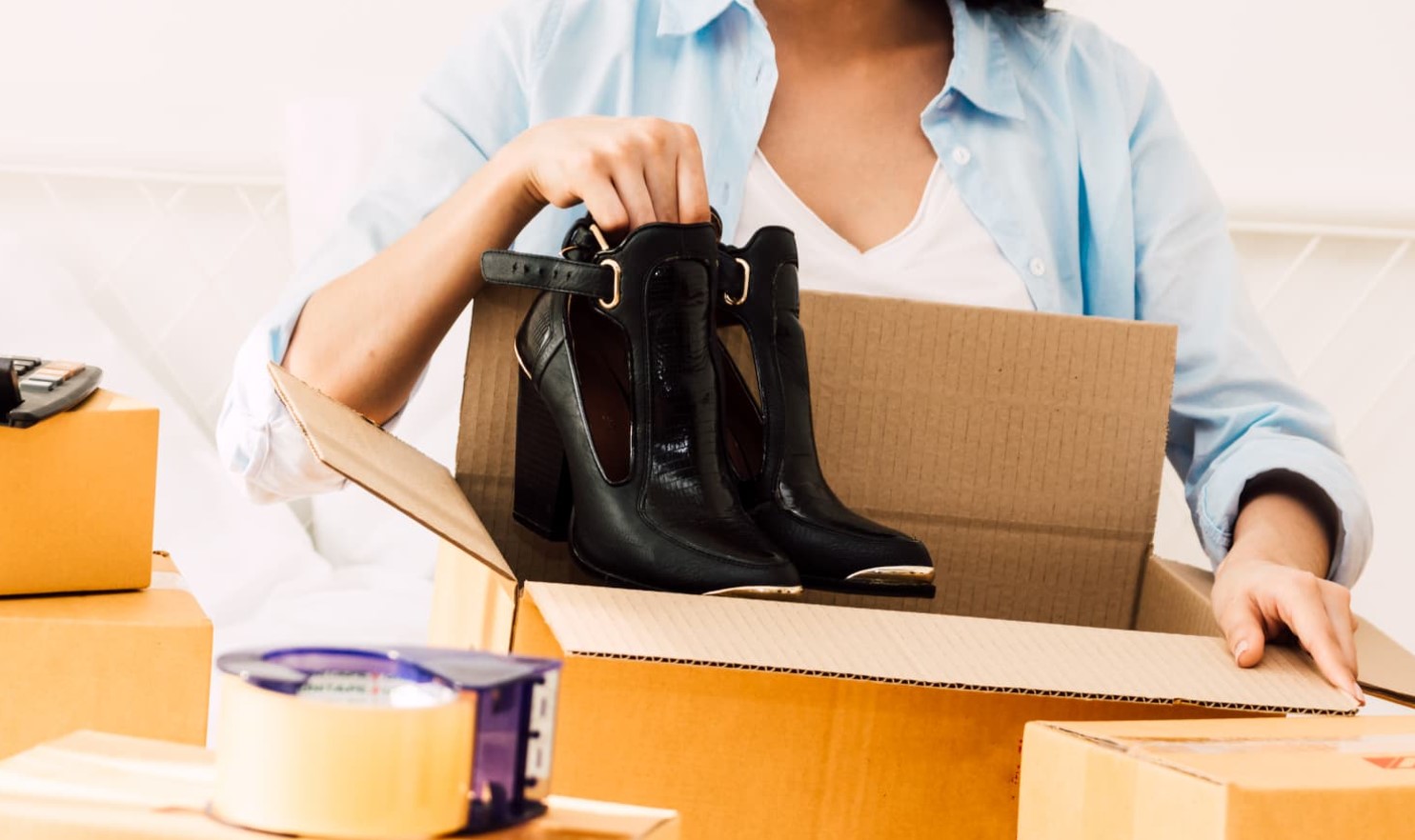Moving can be a stressful time, and ensuring the safety of your belongings during the process is crucial. When it comes to packing your boots for a move, proper care is necessary to prevent damage and maintain their shape. In this article, we will provide you with a step-by-step guide on how to pack boots for moving, ensuring they arrive at your new destination in excellent condition.
Gather Necessary Packing Supplies
Before you start packing your boots, gather all the necessary packing supplies. These may include:
- Sturdy cardboard boxes or plastic containers
- Bubble wrap or packing paper
- Packing tape
- Marker or labels for labeling the boxes
Clean and Prepare Your Boots
Before packing your boots, make sure they are clean and dry. Remove any dirt, mud, or debris from the soles and uppers using a soft brush or cloth. Allow them to air dry completely to prevent moisture buildup during the move.
Stuff the Toes of Your Boots
To maintain the shape of your boots and prevent them from getting crushed, stuff the toes with acid-free tissue paper, crumpled newspaper, or boot shapers. This will help the boots retain their form and prevent any creases or damage.
Wrap the Boots Individually
When packing your boots for a move, it is essential to wrap each pair individually. This step provides an additional layer of protection against scratches, scuffs, and friction between the boots. Start by wrapping each boot in acid-free tissue paper or a soft cloth. This initial wrapping will help prevent any surface damage during the transportation process.
After the initial wrap, consider using bubble wrap or several layers of packing paper for added protection. Pay special attention to delicate areas such as zippers, buckles, or heels. Secure the wrap with tape to ensure it stays in place. By wrapping the boots individually, you minimize the risk of them rubbing against each other and causing any unnecessary damage.
Individually wrapping your boots not only protects them from external factors but also helps maintain their shape. It prevents any creases or folds that can occur when boots are stored or transported without proper care. So, take the time to wrap each pair carefully, ensuring they are well-protected and ready for the journey to your new home.
Use Bubble Wrap or Packing Paper
When packing your boots for a move, utilizing bubble wrap or packing paper is highly recommended. These materials provide an extra layer of cushioning and protection to safeguard your boots from any potential damage. Here’s how you can effectively use bubble wrap or packing paper:
- Wrap each boot: After individually wrapping your boots in acid-free tissue paper or a soft cloth, take a sheet of bubble wrap or packing paper. Carefully wrap the boots again, ensuring that all surfaces are adequately covered. Pay close attention to delicate areas such as zippers, buckles, or heels, providing extra layers of protection for these vulnerable parts.
- Secure the wrap: Once you’ve wrapped the boots with bubble wrap or packing paper, use tape to secure the wrap in place. This ensures that the protective layer remains intact during the moving process, preventing any shifting or unwrapping that could potentially expose your boots to damage.
- Consider layering techniques: If you’re packing multiple pairs of boots in the same box, consider layering the wrapped boots with additional bubble wrap or packing paper in between. This adds an extra level of cushioning and helps prevent any direct contact or friction between the boots.
By using bubble wrap or packing paper, you create a barrier that shields your boots from external impacts and minimizes the risk of scratches, scuffs, or other types of damage. It’s worth investing in these materials to provide optimal protection for your valuable footwear during the move.
Pack the Boots in a Sturdy Box
Choose a sturdy cardboard box or plastic container that is appropriate in size for your boots. Place the wrapped boots inside the box, keeping them in an upright position. Avoid overcrowding the box to prevent unnecessary pressure on the boots.
▪ Fill Any Empty Spaces
To prevent the boots from shifting during transit, fill any empty spaces in the box with packing paper, bubble wrap, or clothing items. This will provide cushioning and keep the boots secure.
▪ Seal the Box Securely
Once you have packed your boots, seal the box securely using packing tape. Make sure all edges and seams are properly sealed to prevent the box from opening during the move. Label the box with the contents and destination room for easy identification during unpacking.
▪ Label the Box
Labeling the box will help you easily locate your boots when unpacking. Clearly write “Boots” on the box along with the destination room. This will ensure that the movers or yourself know where to place the box in your new home.
Consider Using Boot Boxes or Shoe Bags
If you have the original boot boxes or shoe bags, it is recommended to pack your boots in them as they provide an additional layer of protection. The boxes or bags are specifically designed to fit your boots and will help maintain their shape during the move. If you no longer have the original boxes, you can purchase shoe bags or opt for individual plastic storage containers for each pair of boots.
Tips for Long-Distance Moves
If you’re moving long-distance, consider these additional tips to ensure your boots are well-protected:
- Use climate-controlled transportation: Extreme temperatures or high humidity can potentially damage your boots. If possible, choose a moving service that offers climate-controlled transportation to protect your boots from adverse conditions.
- Pack in a wardrobe box: If you have tall boots, you may want to consider using a wardrobe box with a hanging rod. This will allow you to hang your boots upright, preventing them from getting squashed or losing their shape.
- Place silica gel packets: To absorb any moisture and prevent mold or mildew, place a few silica gel packets inside the box or container with your boots. Silica gel packets can be purchased online or found in various stores.
Unpacking and Caring for Your Boots
Once you’ve arrived at your new home, it’s time to unpack and care for your boots. Follow these steps to ensure their longevity:
- Unpack with care: Open the box or container carefully, avoiding any sharp objects that may accidentally damage your boots. Remove the wrapping and gently take out each pair of boots.
- Inspect for damage: Before storing your boots in the closet, inspect them for any signs of damage during the move. Check for scuffs, scratches, or any other issues that may require attention.
- Clean and condition: If your boots have accumulated dirt or scuff marks during the move, gently clean them using appropriate cleaning products. Apply a leather conditioner or protectant to restore moisture and keep the leather supple.
- Store properly: Store your boots in a cool, dry place away from direct sunlight. Avoid stacking them on top of each other to prevent any pressure or deformation. Consider using boot trees or stuff them with acid-free tissue paper to help maintain their shape.
Packing your boots for a move requires proper preparation and care. By following the steps outlined in this article, you can ensure that your boots arrive at your new destination undamaged and in excellent condition. Remember to gather the necessary packing supplies, clean and prepare your boots, wrap them individually, use suitable containers or boxes, fill empty spaces, seal the box securely, and label it for easy identification. Additionally, consider the tips for long-distance moves and take care of your boots during the unpacking process. With these guidelines, your boots will be ready to step into your new home without a hitch.
FAQs
- Can I pack my boots without individual wrapping? While individual wrapping provides an extra layer of protection, you can pack your boots without it. Just ensure they are clean, stuffed with tissue paper, and properly secured in the box.
- Can I use regular shoe boxes instead of boot boxes? If you don’t have boot boxes, regular shoe boxes can be used. However, make sure they are sturdy enough and provide sufficient space for your boots.
- How should I clean my boots after unpacking? Use appropriate cleaning products and follow the manufacturer’s instructions for cleaning your boots. Gently remove any dirt or marks and apply a suitable conditioner or protectant.
- Is it necessary to use climate-controlled transportation for boots? Using climate-controlled transportation is recommended, especially for expensive or delicate boots, as it helps protect them from extreme temperatures and humidity.

